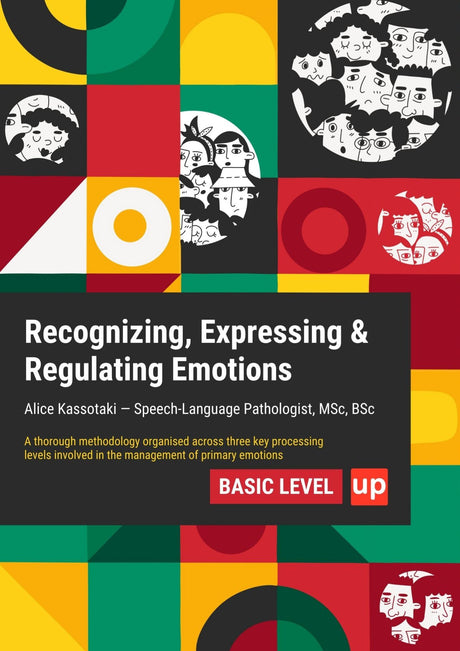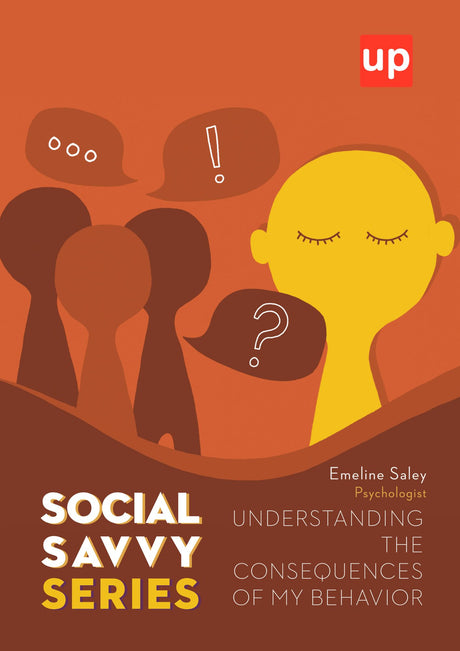For numerous parents and caregivers of children with autism, deciphering the intricacies of communication may seem tantamount to unraveling a cryptic code, with scripting representing a critical component of this discourse. Scripting denotes the repetitive utilization of phrases or conversations previously encountered, often sourced from films or interpersonal exchanges, employed by children with autism as a mechanism for communication. Although initially perceived as constrictive, scripting fundamentally aids children in navigating daily interactions, regulating emotions, and articulating their thoughts and needs.
Key Takeaways
- Scripting in autism serves as a valuable communication tool that provides structure, predictability, and comfort, helping individuals with autism express themselves and navigate social interactions more effectively.
- While scripting supports communication and anxiety management, balancing its use with opportunities for spontaneous language development is essential to foster flexible and adaptive social skills.
- Therapeutic interventions like ABA, speech therapy, and visual supports play a crucial role in supporting individuals with autism by enhancing communication abilities, reducing over-reliance on scripting, and promoting overall social development.
Understanding Scripting in Autism

Scripting is a common communication method used by autistic individuals, where they repetitively use lines from TV shows, movies, or past conversations. This technique is notably prevalent, with up to 75% of people on the autism spectrum engaging in scripting. For many, it serves as a simplified way to communicate and socialize, offering a structured and predictable framework for social interaction and comfort similar to self-stimulatory behavior, or stimming. Scripting plays a significant role in the daily lives of individuals with autism, supporting their ability to connect and express themselves. Scripting also helps individuals with autism develop language and social skills, contributing to their overall development.
Therapeutic interventions such as Applied Behavior Analysis (ABA), speech therapy, and the use of visual supports can help reduce dependency on scripting. These therapies aim to develop more appropriate communication skills for social interactions, enabling autistic individuals to transition smoothly into varied settings. Additionally, therapies focus on building coping mechanisms to support communication and reduce reliance on scripting. Scripting is also a reliable backup for managing anxiety, allowing individuals to handle social cues and sensory input more effectively.
Key Benefits of Scripting:
- Primary benefits include simplifying communication and providing comfort and security
- Assists in social skills development
- Provides comfort and reduces anxiety
- Acts as a stress management tool
In conclusion, while scripting is a crucial communication tool for many on the autism spectrum, serving as a valuable coping mechanism for managing anxiety and stress, therapeutic support can enhance verbal and nonverbal communication, aiding in overall social development.
Characteristics of Scripting
Scripting is a fundamental characteristic often observed in individuals with autism. It involves the repetitive use of specific phrases, sentences, or entire dialogues, which may be drawn from favorite TV shows, movies, books, or previous conversations. Scripting autism, or autism scripting, serves as a valuable tool for communication, self-expression, and managing anxiety in social interactions. For some, this behavior includes immediate echolalia, where words or phrases are repeated right after hearing them. Autism scripting refers to the use of these pre-learned phrases to help individuals with autism participate in social interactions, cope with overwhelming situations, and express themselves when spontaneous language may be difficult. Recognizing scripting as a purposeful and adaptive behavior is key to supporting individuals with autism in their daily lives.
Types of Scripting
Scripting can take several forms, each serving different communication needs for individuals with autism. Verbal scripting is the most recognizable, involving the repetition of phrases, sentences, or entire conversations. This can help individuals initiate conversations, respond to questions, or convey emotions in a way that feels safe and familiar. Nonverbal scripting, on the other hand, may include acting out scenes, using gestures, or relying on visual supports such as picture cards or visual schedules. These alternative methods can be especially helpful for those who find spoken language challenging. Understanding the different types of scripting allows caregivers and professionals to develop more effective communication strategies and create supportive environments that encourage meaningful and effective communication for individuals with autism.
Benefits of Scripting
Scripting stands out as a significant tool for communication among individuals on the autism spectrum. By relying on memorized phrases and dialogues from familiar sources like TV shows and books, autistic individuals can feel more in control during social interactions. This method allows them to manage stressful situations better, offering a form of structure and predictability that can decrease anxiety. Importantly, scripting provides a comfortable framework to express themselves, making interactions less daunting. It empowers individuals with autism, enabling individuals to participate more fully in social settings and advocate for themselves. Scripting can also facilitate meaningful interactions by providing structure and predictability, helping create more inclusive environments. Additionally, scripting plays a role in enhancing social skills, supporting the transition to more spontaneous and natural communication. It is essential to support individuals through tailored communication strategies, giving them the ability to navigate the world with more confidence and ease, promoting inclusion and understanding in diverse social environments.
Enhancing Communication
Scripting enhances communication by offering a structured approach for autistic individuals to engage with others. This predictable framework is pivotal as it facilitates social interactions through memorized scripts, helping them articulate thoughts and emotions effectively. Scripting also enables autistic individuals to communicate effectively in social situations, reducing anxiety and building confidence. Embracing scripting is crucial for fostering these skills, boosting confidence, and empowering autistic individuals. When recognized as a valid communication style, scripting enables individuals to participate more actively in conversations. By understanding its manifestations, parents and caregivers can adapt their interactions, and scripting plays a key role in facilitating communication for those who struggle with spontaneous language, providing the necessary support tailored to each individual’s needs, ultimately aiding more effective conversations and social engagement. It is important to recognize scripting as a unique communication style that deserves respect and understanding.
Supporting Social Interaction
Scripting aids those on the autism spectrum by providing a reliable framework for social interactions. With the use of scripts, individuals can prepare for social situations, reducing anxiety and bolstering confidence. Scripting also supports autistic individuals in navigating various social settings, helping them manage interactions with greater comfort and assurance. This approach allows them to engage in conversations with a sense of predictability and familiarity. By using language from media such as movies and TV shows, autistic individuals can connect with peers who share similar interests, thereby fostering enjoyable social engagements. It is important to create a supportive environment that recognizes and accommodates the needs of individuals who rely on scripting. Scripting not only makes the social world less intimidating but also enhances meaningful interactions, helping autistic individuals express themselves within a structured environment when approached in a supportive manner to encourage confidence and comfort.
Managing Anxiety and Stress
For autistic individuals, scripting offers a sense of predictability that can be invaluable in managing anxiety and stress. The memorization of predetermined dialogue allows for navigating social interactions with enhanced confidence and reduced stress levels. Scripts provide set words and phrases for common scenarios, minimizing the need for processing complex social cues, which is often anxiety-inducing. Additionally, scripting serves as a self-soothing mechanism, enabling effective emotional regulation and helping autistic individuals cope more adeptly with anxiety-inducing situations. Scripting is especially helpful in anxiety-inducing social situations, as it provides comfort and predictability, making these challenging scenarios more manageable. By using scripts, the likelihood of disruptive behaviors diminishes, creating a more stable and less stressful environment conducive to their well-being.
Potential Drawbacks of Scripting

Scripting in autism refers to the use of pre-learned dialogue or phrases, often derived from TV shows or self-created scripts, by autistic individuals in communication. While scripting can be a useful tool for developing social skills and enhancing verbal communication, it also has potential drawbacks that warrant consideration. The repetitive nature of scripting may limit spontaneous interactions and hinder adaptability. Scripted responses can sometimes replace more adaptive communication in challenging or high-stress situations, serving as a coping mechanism but potentially reducing opportunities for more flexible social engagement.
Moreover, extensive reliance on scripting may mask symptoms of Autism Spectrum Disorder (ASD), delaying diagnoses and interventions. Scripting behavior can evolve over time, varying from simple repetitive lines in children to more complex, abstract scripts in older individuals, and this evolution can impact overall well-being. Over time, the exhaustion from maintaining scripted behavior can lead to stress and even autistic burnout. Though scripting provides a sense of predictability, it might impede learning and the exploration of unscripted language use, impacting overall communication growth and self-identity.
Compared to typical communication patterns, scripting differs in that it relies on memorized or rehearsed language rather than spontaneous, adaptive interaction. Over-reliance on scripting may also hinder the development of skills necessary for understanding abstract concepts, making it more challenging to engage in flexible, reciprocal conversations.
Risk of Hindering Spontaneous Communication
Scripts bring structure and predictability to social interactions for individuals on the autism spectrum. However, this reliance can limit spontaneous communication efforts. In scenarios where scripted language doesn’t fit, individuals might struggle to engage naturally, suggesting that scripts could hinder flexible communicative responses. Difficulty in adapting to unplanned social cues can lead to reduced social development opportunities. Spontaneous communication offers critical lessons, promoting adaptability and broadening an individual’s communication toolkit. Thus, while scripts serve as vital stepping stones, emerging beyond them is essential to enhance spontaneity and adaptability in communication. Gaining a deeper understanding of scripting can help tailor support and interventions to better meet individual needs.
Over-reliance on Familiar Scripts
Relying heavily on familiar scripts can lead to challenges in developing new communication skills due to its repetitive nature. This dependency can hinder adaptability during conversations, preventing the growth of effective communication techniques. Limited flexibility through over-reliance on scripts may cause difficulties when individuals encounter new or unpredictable situations. Additionally, this over-reliance can hinder the development of understanding and engaging with abstract concepts, making it harder to grasp ideas that are not concrete or literal. By excessively mirroring characters or scenarios from scripts, individuals risk experiencing a disconnect from their sense of identity, potentially impacting their mental well-being. While scripts offer predictability and a sense of comfort, they might restrict opportunities for spontaneous communication, stifling the development of a diverse range of language skills. Expanding beyond scripted language is vital for promoting a healthier sense of identity and supporting robust communication capabilities.
Scripting Across Different Age Groups
Scripting is a common form of communication used by individuals on the autism spectrum. It involves the use of pre-learned phrases, often derived from media such as TV shows and cartoons. This communication style can evolve over time, starting with simple repetitions in early childhood and potentially developing into complex personal scripts as individuals grow older. Studying scripting behavior across different age groups can help gain insights into the development of communication skills and the ways autistic individuals express themselves. Understanding these age-related differences in scripting is crucial, as it highlights the unique ways autistic individuals engage with language and communication. Recognizing such diversities can help develop effective strategies to support their language development, improve social interactions, and foster self-regulation skills. These observations provide valuable insights for caregivers and professionals working to support individuals with autism.
Early Childhood
In early childhood, scripting is a vital tool for children with autism as they begin to navigate communication and socialization. Young autistic children frequently use scripts from familiar media sources. By repeating lines from their favorite TV shows or cartoons, they begin to explore language within a comfortable framework. Integrating script-fading procedures can be particularly beneficial during this stage, assisting children in initiating peer interactions and creating more intricate sentence structures. Play-based activities are another effective approach, extending these familiar scripts in a way that encourages spontaneous communication and offers opportunities for generalizing language skills. Teaching coping strategies alongside scripting can further support young children's communication and emotional regulation, helping them manage behaviors and adapt to new social situations. Additionally, augmentative and alternative communication (AAC) methods provide valuable support, offering alternative pathways for communication while complementing the use of scripts. Early intervention with scripted language significantly enhances young autistic children’s confidence and preparedness for social encounters, setting a solid foundation for future communication development.
School Age
As children with autism progress into school age, their scripting often becomes more sophisticated, drawing on personal experiences and emotions. The frequency of scripting typically decreases during this period as children develop stronger language skills, self-regulation, and social abilities. Nonetheless, scripting remains a meaningful communication tool for many autistic individuals, complementing the development of other communication channels. Scripting derived from lines in media continues to serve as a potent tool for exploring language and character imitation, yet it becomes more personalized, reflecting individual experiences. It is imperative to view scripting not as an obstacle, but as a beneficial method of communication, especially for gestalt learners. Supportive strategies that foster spontaneous language skills can further enrich these children’s ability to engage effectively with their environment, ensuring that scripting remains a constructive component of their language development journey. These supportive approaches are also effective in facilitating communication for school-age children with autism, providing structured ways to express themselves and participate in social interactions.
Adolescence and Beyond
In adolescence and adulthood, scripting continues to serve as a powerful technique, fostering communication and social skills in autistic individuals. By relying on pre-learned phrases or dialogues, these individuals can navigate social situations more successfully, thereby enhancing their social competence and self-esteem. The repetitive nature of scripting also aids in learning and memory recall, providing both comfort and a medium for self-expression. It’s important to note that while scripting may become less frequent with improved language skills, it remains a valuable communication tool, especially when tailored to the individual’s needs and experiences. Collaboration with professionals to identify and enhance different types of scripting, including refining scripted responses as coping mechanisms and communication tools, can play a pivotal role in supporting communication in adolescence and adulthood. Recognizing the comfort and security scripting offers emphasizes its role beyond mere language development, illustrating how it can be a lifelong aid in personal and social growth for autistic individuals.
Personal Scripts in Autism
Personal scripts are uniquely tailored phrases or routines developed by individuals with autism to help them navigate social interactions and manage anxiety. These scripts often evolve from personal experiences, conversations, or exposure to media, and provide a structured framework that brings predictability and comfort in unfamiliar or overwhelming situations. For many individuals with autism, personal scripts are a valuable communication tool, enabling them to express their needs, wants, and emotions in a way that feels safe and manageable. By supporting the use of personal scripts, caregivers and educators can empower individuals with autism to participate more confidently in social interactions, fostering independence and enhancing their overall communication abilities.
Repetitive Behaviors and Scripting
Repetitive behaviors, such as hand flapping, rocking, or repeating certain actions, are common among individuals with autism and are closely related to scripting. Scripting can act as a coping mechanism, helping individuals manage anxiety and sensory overload that often accompany social interaction. When faced with stress or uncertainty, individuals with autism may turn to scripting and other repetitive behaviors to self-soothe and regain a sense of control. Understanding the connection between repetitive behaviors and scripting is essential for developing effective intervention strategies that support communication and social interaction skills. By recognizing the valuable role scripting plays in managing anxiety and achieving developmental and behavioral milestones, caregivers and professionals can introduce alternative communication methods and create supportive environments that help individuals with autism reach their full potential.
Managing Scripting Effectively

Scripting offers autistic individuals a structured framework for engaging in conversations and expressing themselves, thus simplifying social interactions. It can be a lifeline for many on the autism spectrum, providing a predictable and familiar set of language patterns that ease anxiety and stress. However, while scripting can facilitate communication, its over-reliance may inhibit the development of spontaneous conversation skills. Autistic scripting often originates from various sources, including media, self-created phrases, and can be verbal, written, or nonverbal. For effective communication, it is essential to extend beyond scripting by expanding vocabulary and teaching social cues, empowering autistic individuals with the flexibility needed for more dynamic and effective interactions. Creating a supportive environment that recognizes and accommodates different communication styles is also crucial, as it fosters communication growth and encourages self-expression.
Strategies for Parents and Caregivers
Understanding the specific scripts used by children with autism is crucial for parents to support their communication and social interactions. By recognizing these patterns, parents can implement script-fading procedures, which encourage children to initiate conversations more freely, especially during play. This flexibility can enhance a child's interactions and emotional regulation by moving beyond rote speech patterns. Collaborating closely with therapists and educators enables parents to tailor communication strategies that meet their child's unique needs. By integrating beneficial scripts into daily routines, parents can significantly boost their child's communication skills, leading to stronger social connections and improved interaction capabilities.
Application of ABA Therapy
Applied Behavior Analysis (ABA) therapy is an evidence-based approach ideally suited for individuals with Autism Spectrum Disorder, focusing on achieving developmental and behavioral milestones. In addressing scripting and repetitive behaviors, ABA therapy offers a structured method for teaching new skills and replacing maladaptive behaviors with appropriate alternatives. By breaking down complex skills into smaller steps and using positive reinforcement, ABA facilitates effective learning and behavioral change. Comprehensive scripting plans devised by behavior analysts ensure that personalized strategies enhance communication and social skills. ABA therapy not only supports personal development but also furthers academic success by instilling essential coping and life skills through consistent positive reinforcement in both therapeutic and home settings.
Supportive Therapies for Scripting
Scripting in autism plays a crucial role as a developmental tool, aiding communication and expression. To support autistic individuals in this journey, various therapies can be implemented. Applied Behavior Analysis (ABA) is widely recognized, as it employs reinforcements to encourage positive communication and social skills. Coupled with occupational and speech therapy, ABA can address communication styles and cue understanding.
Visual supports, like visual schedules and social stories, help reduce the need for scripting by offering clear communication pathways. These tools can be particularly beneficial in enhancing social interactions and fostering an inclusive environment.
List of beneficial therapies and tools:
- ABA Therapy: Utilizes positive reinforcement to improve skills.
- Occupational Therapy: Helps with sensory input and self-regulation.
- Speech Therapy: Focuses on both verbal and nonverbal communication.
- Visual Supports: Includes visual aids and schedules.
- Play-based Therapy: Encourages creativity and spontaneous language use.
By embracing these supportive therapies, we can aid autistic individuals in navigating social interactions and achieving significant communication milestones. Understanding and valuing scripting as a legitimate communication tool embeds inclusivity into our communities.
Conclusion
Scripting in autism is a valuable communication tool that provides structure, comfort, and predictability for individuals on the autism spectrum. While it supports communication and helps manage anxiety, balancing scripting with opportunities for spontaneous language development is essential to foster flexible social skills. Through supportive therapies and understanding environments, individuals with autism can enhance their communication abilities and confidently navigate social interactions, promoting inclusion and meaningful connections.
Upbility materials offer valuable resources designed to support individuals with autism in developing their communication and social skills. By providing structured tools and visual supports, Upbility helps create a supportive environment that complements scripting, encouraging the growth of spontaneous communication and enhancing overall social interaction.
Frequently Asked Questions (FAQ)
What is scripting in autism?
Scripting in autism refers to the repetitive use of pre-learned phrases, sentences, or dialogues by individuals with autism. These scripts are often drawn from movies, TV shows, books, or previous conversations and serve as a communication tool to help express thoughts, manage anxiety, and navigate social interactions.
Why do individuals with autism use scripting?
Individuals with autism use scripting as a valuable coping mechanism to provide structure, predictability, and comfort in social situations. It helps reduce anxiety, supports communication when spontaneous language is challenging, and facilitates meaningful interactions.
Is scripting harmful or should it be stopped?
Scripting is not inherently harmful; it serves important functions such as emotional regulation and communication support. However, over-reliance on scripting may limit the development of spontaneous communication skills. Therapeutic interventions aim to balance scripting use with opportunities for flexible language development.
Can scripting help improve social skills?
Yes, scripting can enhance social skills by providing a structured framework for initiating and maintaining conversations. It allows individuals with autism to practice social interactions in a predictable way, building confidence and competence over time.
How can parents and caregivers support scripting in autism?
Parents and caregivers can support scripting by recognizing it as a unique communication style, using script-fading techniques to encourage spontaneous language, collaborating with therapists, and providing a supportive environment with visual supports and structured routines.
What therapies help manage scripting behavior?
Applied Behavior Analysis (ABA) therapy, speech therapy, occupational therapy, and the use of visual supports such as visual schedules and social stories are effective in managing scripting. These therapies help develop alternative communication methods, reduce over-reliance on scripting, and promote overall social development.
Does scripting change as individuals with autism grow older?
Scripting often evolves with age. Younger children may rely more on simple repetitions from media, while older individuals might develop more personalized and complex scripts. Though scripting may decrease as language skills improve, it often remains a valuable communication tool throughout life.
How is scripting different from typical communication?
Unlike typical communication, which emphasizes spontaneous and adaptive interaction, scripting relies on memorized or rehearsed language. This unique communication style provides predictability and comfort but may require support to encourage flexibility and spontaneous language use.
Can scripting help manage anxiety and stress?
Yes, scripting offers a predictable framework that can reduce anxiety and stress by providing familiar language to navigate social cues and sensory overload. It acts as a self-soothing strategy, helping individuals regulate emotions in challenging situations.
When should I seek professional help for scripting behavior?
If scripting significantly limits spontaneous communication, social flexibility, or causes distress, it is beneficial to seek professional evaluation. Therapists can develop tailored intervention strategies to support communication growth while respecting the individual's unique needs.
Original content from the Upbility writing team. Reproducing this article, in whole or in part, without credit to the publisher is prohibited.
References
-
American Psychiatric Association. (2013). Diagnostic and Statistical Manual of Mental Disorders (5th ed.). Arlington, VA: American Psychiatric Publishing.
-
Boyd, B. A., & Shaw, E. (2010). Autism and communication: What we know and what we still need to learn. Journal of Autism and Developmental Disorders, 40(9), 1034–1041. https://doi.org/10.1007/s10803-010-0981-6
-
Charlop-Christy, M. H., & Kelso, S. E. (2003). Teaching conversational speech to children with autism: A review of treatment efficacy. Journal of Autism and Developmental Disorders, 33(6), 567–579. https://doi.org/10.1023/B:JADD.0000006005.19770.2a
-
Koegel, R. L., Koegel, L. K., & McNerney, E. K. (2001). Pivotal response treatments for autism. In J. A. Mulick & L. J. Butter (Eds.), Behavior analysis for lasting change (pp. 241–258). Sloan Publishing.
-
Prizant, B. M., Wetherby, A. M., Rubin, E., & Laurent, A. C. (2003). The SCERTS model: A comprehensive educational approach for children with autism spectrum disorders. Infants & Young Children, 16(4), 296–316. https://doi.org/10.1097/00001163-200307000-00007
-
Schreibman, L. (2005). The science and fiction of autism. Harvard University Press.
-
Smith, T., & Iadarola, S. (2015). Evidence base update for autism spectrum disorder. Journal of Clinical Child & Adolescent Psychology, 44(6), 897–922. https://doi.org/10.1080/15374416.2015.1077448









